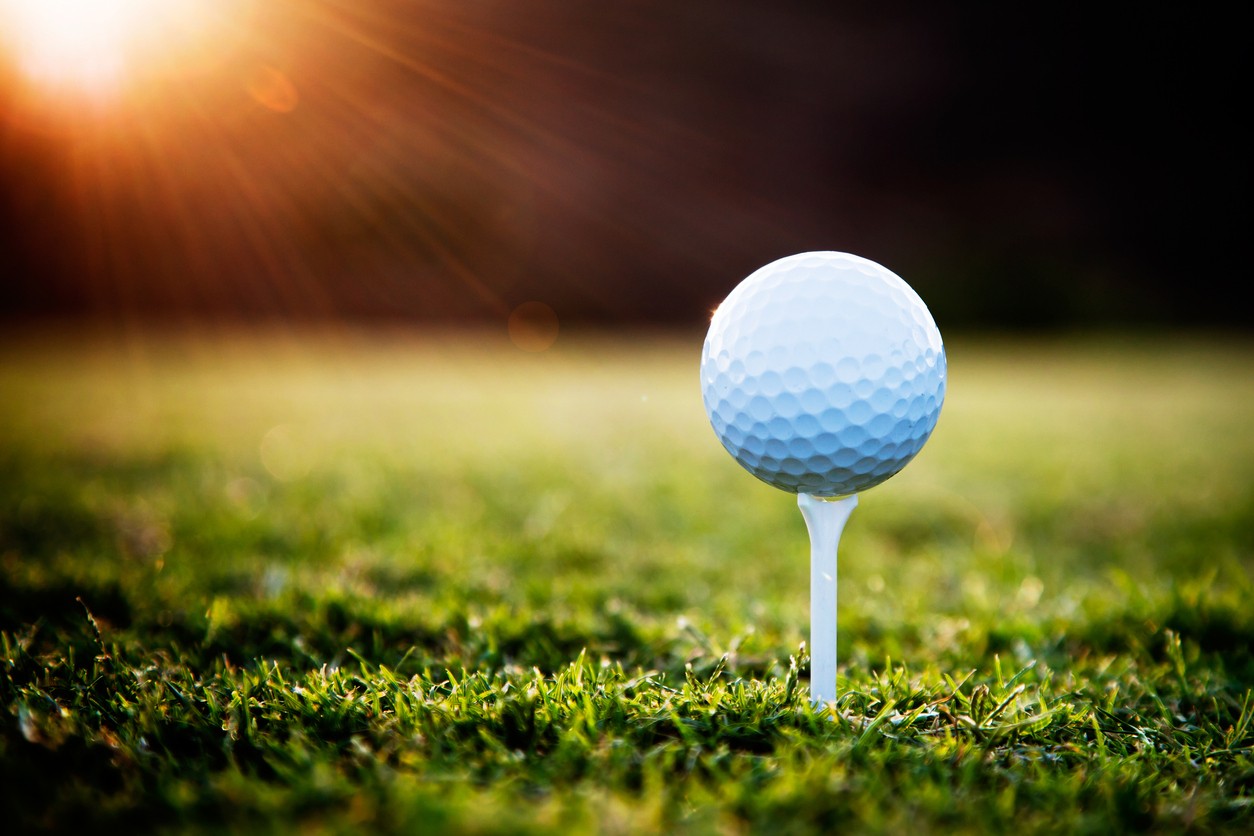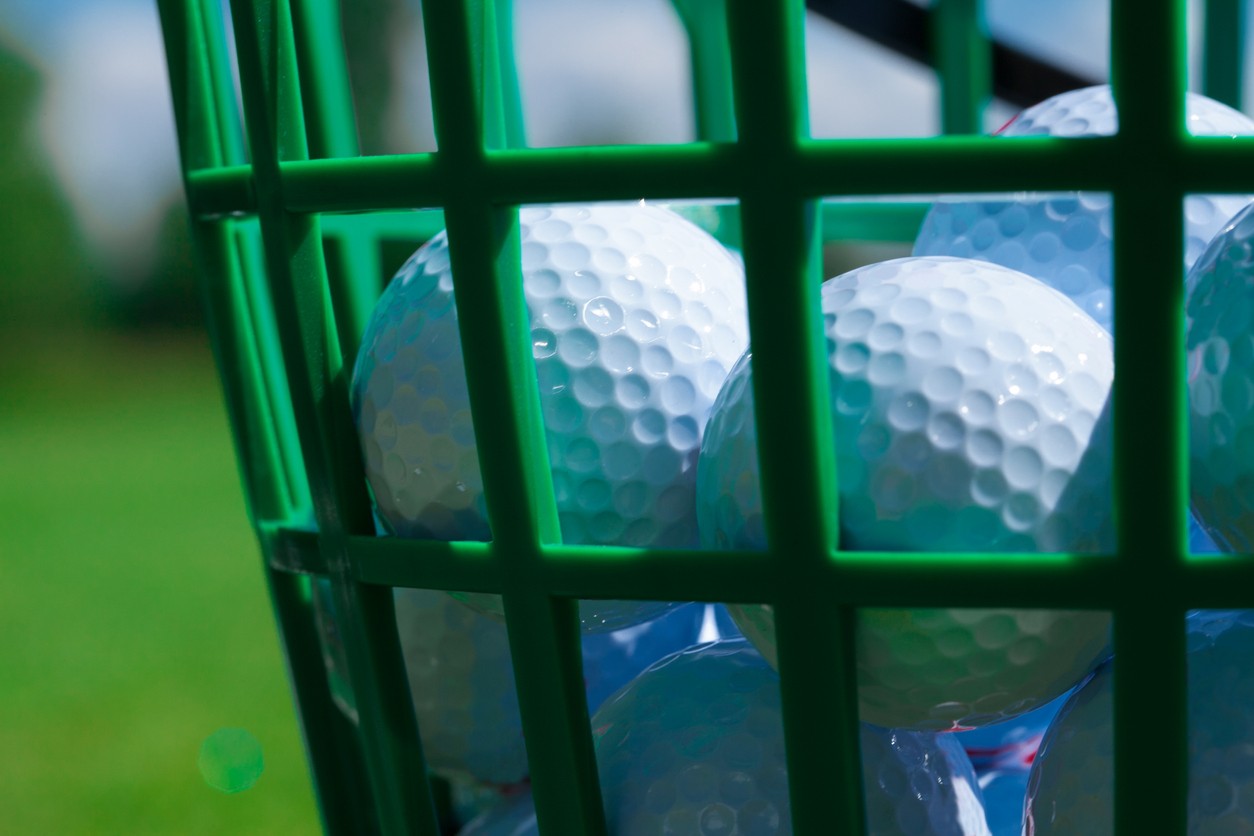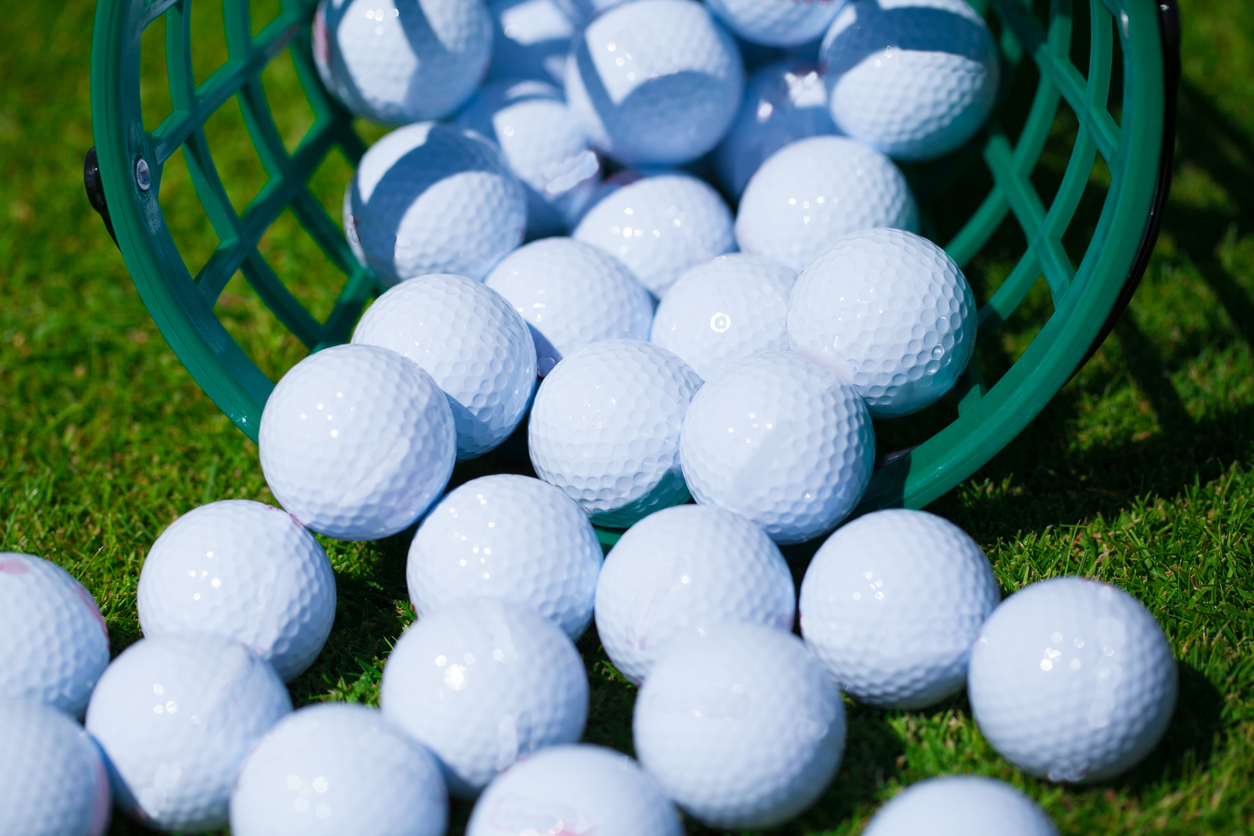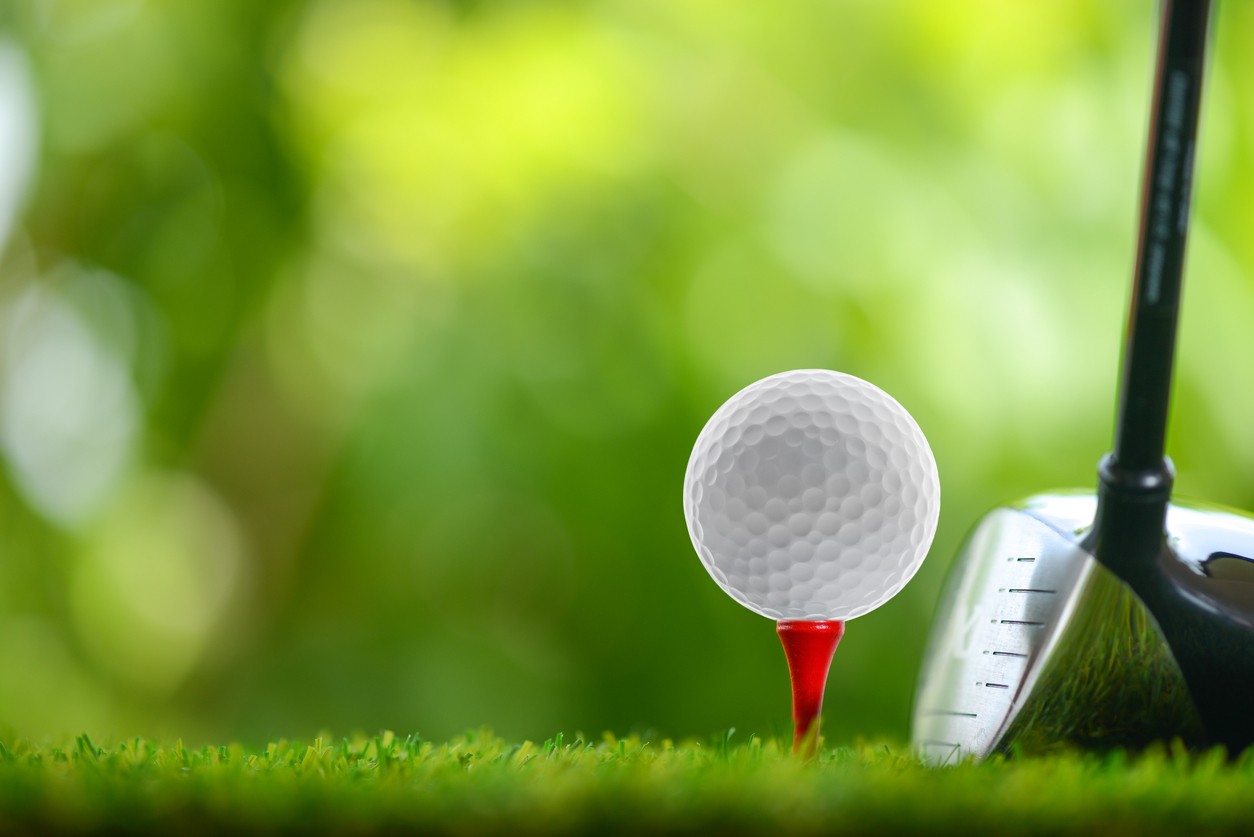If you’ve ever bought some off-brand, high-compression golf balls, you know how important technology and design are to your game and overall score. But can you imagine the old days and playing golf with balls filled with goose feathers? Me neither.
You might be alright on the 6th hole at River’s Edge Golf Course since the hole favors accuracy over driving distance, but I’m not sure you could carry the water past the waterfall and up to the elevated three-tiered green.
Maybe that’s why so many old golf courses had bunkers but no water hazards. Not only were the golf balls short on distance, but they were also pricey.
History of the Golf Ball Design

Golf has been confounding otherwise sane men and women for centuries. Even with great strides in equipment technology, it’s a challenge for most. Back in the 14th century, games that resembled golf used hand-made wooden balls made of beech and boxwood that were most often irregular in shape, prone to cracking, and of inconsistent flight. Later balls made of feathers were better but lightyears away from today’s best golf balls.
Still, those featherie golf balls improved and were used from the 15th to 19th century. The balls took skill and time to make, as craftsmen stuffed goose feathers into a water-soaked pouch made of horse or cowhide and carefully stitched the cover closed. As the featherie dried, the leather shrank, squeezing the feathers down tight and making the ball hard enough to stand a day of getting smacked around.
Amazingly, the leather balls could travel more than 150 yards with reasonable accuracy. The price (in today’s dollars) of nearly $20 each made golf an elite and inclusive game.
In 1843, while people in the US were trekking west to seek their fortunes, the town of St Andrews, Fife, Scotland, was already known as the “Home of Golf”. And it was here that Robert Adams Paterson, a divinity student at St. Andrews, received a package from Singapore with God Vishnu on a statuette.
The package was packed in gutta-percha, a hearty, flexible sap from the Malaysian sapodilla tree. Paterson knew that the gum resin was pliable and as an avid (but financially strapped) golfer, he pondered the idea of molding the sap into a golf ball shape.
Paterson and his brother made a series of gutties, eventually stamping their prototype with “Paterson’s Composite – Patented,” although they were never granted a patent for their manufacture or unique design.
Gutties originally had but with continuous use, the nicked and cut ball’s surface changed its trajectory and helped it fly farther, prompting a new design that included a raised bramble design. The new style offered better accuracy than the smooth ball, and many golf ball manufacturers converted to new surfaces.
One afternoon, Coburn Haskell was waiting in the lobby for his buddy to get off work at the B. F. Goodrich plant in Akron, Ohio, so that they could hit the local golf course. He wound some rubber thread into a ball and bounced it to pass time. It hit the ceiling. So did his imagination.
Haskell wrapped a solid inner core with those same rubber threads in 1898 and tried a thin shell made of balatá sap in a raised design. The balatá was a bit soft, leading to cover damage that often resembled a slash or smile, rendering the ball useless. The better you struck the sweet spot, the less likely you were to leave a smile. The early 1900s brought more changes.
The Dimpled Ball

William Taylor gets credit for gaining a 1916 US patent (later worldwide) for a radical change he called “a cavity which is of the inverted bramble type” golf ball cover design. Oddly enough, David Stanley Froy entered the Open in 1900 at the Old Course at St. Andrews with a prototype ball with indentions that he and friends Peter G. Femie and James McHardy received a patent for in 1897.
Regardless of who designed the new dimpled balls, they are still the best design for cutting through the wind, although different patterns and shapes do impact the number of dimples. Hexagonal and pentagonal dimples can also promote longer distance.
Physics says the dimples create a boundary layer of turbulent air that travels further down the backside of the ball, creating a thinner wake and eliminating drag for more distance.
As for golf balls themselves, James R. Bartsch filed a patent application for a one-piece ball in 1963. By 1967, the A. G. Spalding company offered a patented solid-molded ball called the Unicore. Spalding followed with the two-piece Top-Flight in 1972 with a Surlyn cover that effectively ended bad-strike smiles and added distance.
Top-Flight dominated the market until 2000, when Titleist introduced the ProV1, a three-piece multilayer ball, to the Tour in Las Vegas. Shortly afterward, nearly one-third of all PGA Tour card holding professional players switched to the ProV1, a massive blow to dozens of equipment manufacturers.
Today, players choose from over 1,000 different golf balls offering greater distance, increased or decreased spin, and better durability. Unfortunately, choosing the proper ball is tough!
Types of Dimples

Different dimple patterns and the number of dimples change a ball’s drag force and aerodynamic drag. In the 1970s, the United States Golf Association instituted a rule that stated sanctioned balls must be as symmetrical as possible. The rule happened after the Polara ball became famous for its six rows of normal dimples followed by shallow dimples elsewhere. The asymmetrical configuration of golf ball dimples allowed the ball to adjust its spin axis and the ball’s flight automatically. Polara’s manufacturer won a $1.375 million out-of-court settlement from the USGA in 1985.
Polara now manufactures the Ultimate Straight – which the USGA sanctions – that can automatically correct up to 75% of a hook or slice.
There are no regulations on the number of dimples a golf ball can sport, and the dimple count ranges from 300 to 500 on most balls. The more dimples, the smaller they must be to fit the standard golf ball, but the number doesn’t specifically make one number better than another.
Square and triangular mesh balls were popular in the teens and twenties, but round dimples prevailed. Later changes involved the shape of dimples and their depth change. The pattern of the dimples directly affects a golf ball’s aerodynamics, including drag, distance, speed, launch angle, and height.
The average depth of the dimples determines the ball’s spin and, thus, the actual lift the ball achieves. Computer simulations and millions of automated tests have determined dozens of properties for each ball and cover design. But which is best?
The Ball For You

In practice, most golfers head straight to the golf balls that promise the best overall distance, but there’s more to that promise than meets the eye; just check at the River’s Edge Pro Shop for clarity.
It turns out that much of a ball’s spin rate (the rotation rate immediately after impact) depends on the angle your club strikes the ball with. It also depends on your club speed.
Criteria for golf ball choices:
- Golf Balls for Spin – Low spin golf balls are best for higher handicappers with trouble getting a perfect ball strike. Open or closed face hits and high and low-angle shots produce sidespin. Low spin balls such as Callaway Warbird, Bridgestone e6 Sport, and TaylorMade Aeroburner can help reduce your slice and hook. High spin balls like the Titleist ProV1, Callaway Chrome Soft, and the TaylorMade TP5 are best for low handicappers who consistently strike the ball well.
- Golf Balls for Accuracy – Soft golf balls help with accuracy. They forgive even if your strike isn’t perfect. Ideally, your clubface should be square to the ball and the target line. Your toes, hips, and shoulders need to align with the clubface and your target. If you can’t align, the Callaway Chrome Soft can help. Another option is the Bridgestone e6 with web-like dimples designed to reduce hook and slice spin without degrading distance.
- Golf Balls for Distance – Optimal weight transfer translates to driving distance, so do your best to let your weight swing to your back leg at the peak of your backswing (about 60%) before transferring your weight (about 80%) after you drive through the ball with your hips and hands.
The type of ball you choose, and your golf club speed also impact your distance. Harder, lower compression balls travel further than softer, high compression balls. In cold weather, the effects increase.
If you strike the ball well, the Nike One Platinum is a great distance ball that Tiger Woods plays. It has a low spin that keeps shots straight with 408 dimples to reach that maximum distance. Wilson Tour Velocity golf balls also offer distance, with a soft feel.
- Golf Balls for Seniors and Beginners – For the most part, beginners don’t strike the ball perfectly. And like seniors, their club speed isn’t as high as experienced, stronger players. Generally, a softer golf ball with a lower compression rating can help reduce side spin and add distance.
Swing speed can also influence spin and lift, so using a ball that launches higher is a plus. You need that lift to get chip shots to settle on the green instead of skipping away. Callaway Supersoft golf balls meet the lift criteria. The Wilson Staff Duo also offers softness around the green and distance off the tee.
Seniors can usually handle the medium and high spin balls that beginner golfers can’t. Both groups may be happy with colored balls easier to track at dusk and dawn.